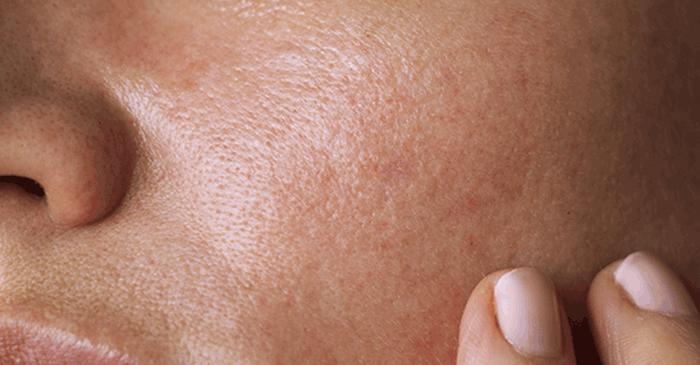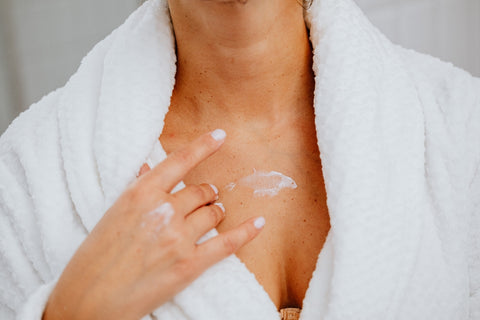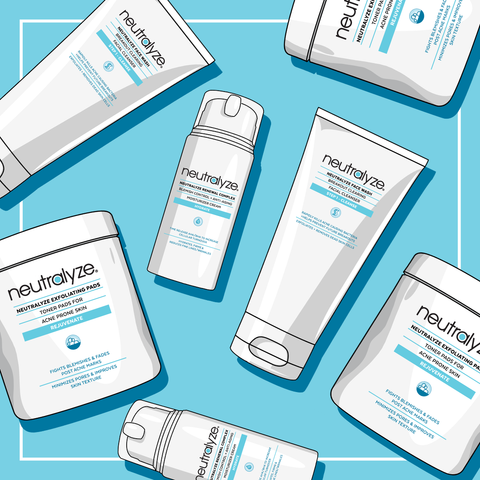A Quick Guide to Managing Combination Skin

Among the different skin types, combination skin is one of the most difficult to address. People with this skin type have the characteristics of dry and oily skin in different areas of the face. This makes it tricky to find the right product or skincare regimen to address both.
To find the best way to take care of combination skin, understanding what it is and what can possibly aggravate the oiliness and dryness is key.
How to Tell If You Have Combination Skin
Considered to be the most common skin type, combination skin is characterized by uneven oil production in the face. The oil glands in the T-zone area are more active compared to anywhere else on the face. This results in the appearance of shiny skin, large pores, and blackheads on the forehead, nose, and jaw area.
In contrast, other parts of the face, like the hairline, cheeks, and jawline, exhibit dullness, flakiness, and the appearance of fine lines and wrinkles. Additionally, the cheeks and neck area may be more sensitive to cleansers.
Because of this, you can experience dryness and mild breakouts at the same time. Additionally, when applying make-up, you may notice that some parts start to look patchy in the middle of the day.
Besides the regional differences in oil production, a study also found that there are seasonal variations associated with this skin type. People with combination skin tend to experience higher sebum production during the summer months and drier skin in the winter months.
Best Skincare Regimen for Combination Skin
Discovering the right skincare routine for combination skin can be challenging since you have to address both the oily and dry characteristics. The key here is finding the right balance in giving what the dry areas and oily areas need.
Use natural cleansers.
While there are many benefits to using natural cleansers when washing your face, this is even more significant with combination skin. Because they’re free from harmful chemicals and detergents, natural cleansers help remove dirt and impurities while also balancing oil production.
The best ones are non-irritating and mattify the T-zone area without overly drying your cheeks. Natural cleansers can come in gel or cream form.
Avoid chemical-based toners.
As with the cleansers, it’s best to use toners that are free from chemicals and additives, like artificial fragrances, menthol, and alcohol. Natural toners help nourish and restore the pH balance of your skin after cleansing.
Look for one that contains antioxidant-rich and anti-inflammatory ingredients that help to hydrate your dry areas while reducing the oil production in your T-zone.
Moisturize areas accordingly.
Since most moisturizers are formulated either for oily or dry skin, you can use both if you have a combination skin type. You can use heavier moisturizers on the dry areas of your skin, like your cheeks, and lighter moisturizers on the T-zone area.
If you’re thinking of using just one product, then choose an oil-free moisturizer so that it doesn’t add additional grease to your oily areas.
Exfoliate regularly.
Exfoliation is important for combination skin to help unclog pores, help skincare products penetrate deeper, and boost circulation and lymphatic drainage. When exfoliating, it’s essential to apply varying pressure to different parts of your face: gentler on your cheeks and a little more scrubbing on the T-zone.
Even though you need to exfoliate regularly, be careful not to do it too often as it can irritate your skin. It’s best to start with a weekly routine, then you can build up slowly to two or three times a week, so long as there are no adverse reactions.
Use sun protection when going out.
Regardless of skin type, using sunscreen is a must when going outside. Sunscreen offers protection against UV rays, which are still present even when the sky is overcast. For combination skin, look for a lightweight, oil-free, broad-spectrum option.
Apply nourishing masks.
Like with the moisturizer, you can use different masks to target various areas of your face. You can use a hydrating mask on your cheeks and an oil-absorbing mask on your T-zone. This approach helps ensure that the various needs of your face are addressed.
In case you want to opt for just a single mask, choose products that are specially formulated to cleanse pores without drying your skin.
Use anti-aging products with natural ingredients.
To add another layer of protection to your skin from environmental stressors, use anti-aging products that are formulated with natural, nourishing, and non-comedogenic ingredients. When applying on combination skin, use more on the cheeks and dry areas and go lightly on the T-zone.
Boost skin protection with the right serums.
Serums with alpha-hydroxy acids (AHA) can reduce the visible pores on your T-zone. Salicylic acid is also good for removing blemishes and minimizing breakouts.
Additionally, avoid touching your face unnecessarily, as you may be introducing dirt and bacteria through your hands. Keep some oil blotting sheets on your purse to blot out excess oil as you go about your day. This will help reduce excess oil build-up and control sebum production in overactive areas.
Ingredients to Look for and Avoid
When choosing skincare products, make it a habit to examine their ingredients. As a rule of thumb, here are the ingredients to look for and avoid in skincare products for combination skin.
Look for:
Because Vitamin C is an antioxidant, it helps promote collagen growth on your skin, which helps brighten up your complexion. It’s a multi-purpose ingredient that’s good for any skin type, but especially for combination skin.
Both oily and dry skin types need sufficient hydration to maintain good skin health. Hyaluronic acid helps draw in moisture to the skin, increasing skin elasticity without adding any excess oil. These qualities make it great for combination skin.
Salicylic acid has antibacterial properties and is generally recommended for oily and acne-prone skin. It helps unclog pores and prevent the formation of blackheads and whiteheads. When it penetrates deeper into the skin, it also removes sebum and dead skin.
Because mandelic acid is a gentler type of AHA, it’s great for use with combination skin as it’s less likely to cause irritation. It’s used for exfoliating skin because it promotes cellular regeneration, resulting in a brighter complexion after regular use.
Avoid:
Occlusives, like thick creams and moisturizers, mineral oils, and petroleum jelly, add grease to your face, which can clog up pores. Furthermore, these add a barrier to your skin to prevent moisture loss but may result in a thick or oily feeling on your face.
While alcohol-based skincare products may help get rid of oil on a superficial level, they also remove the natural moisture in your skin. This results in a drying feeling that may even be accompanied by redness and irritation.
Silicones, like dimethicone, are used in beauty products to achieve that velvety, smooth feeling on your skin. They work by filling up the large pores and fine lines and are used as primers. However, they’re bad news for combination skin as they may clog up your pores.
Keep in mind that some hydrating products may address the dryness but amp up the oiliness in other parts of your face. Meanwhile, products that take care of excess oil may leave your skin dry and irritated. For combination skin, it’s important to be mindful of the ingredients in your chosen products and to follow a healthy skincare regimen.


